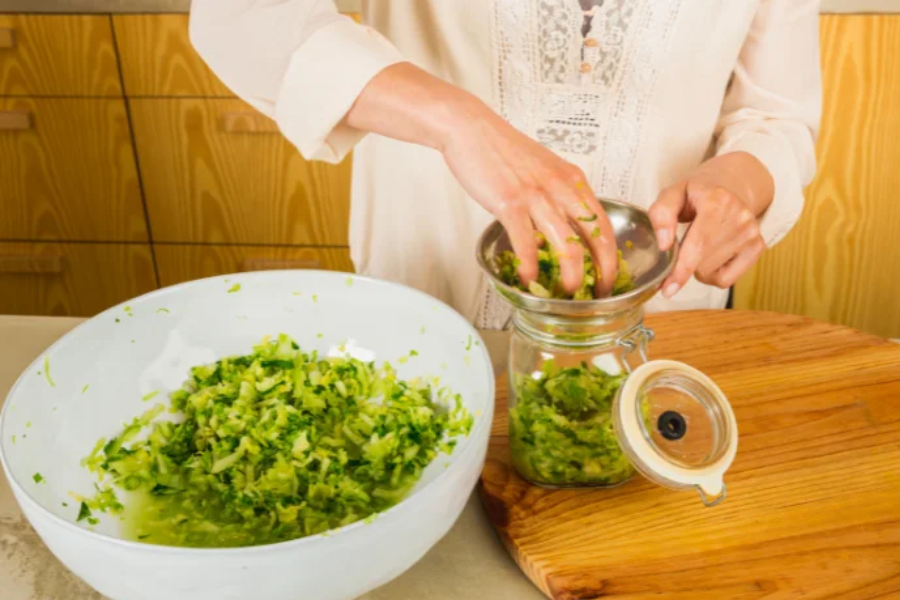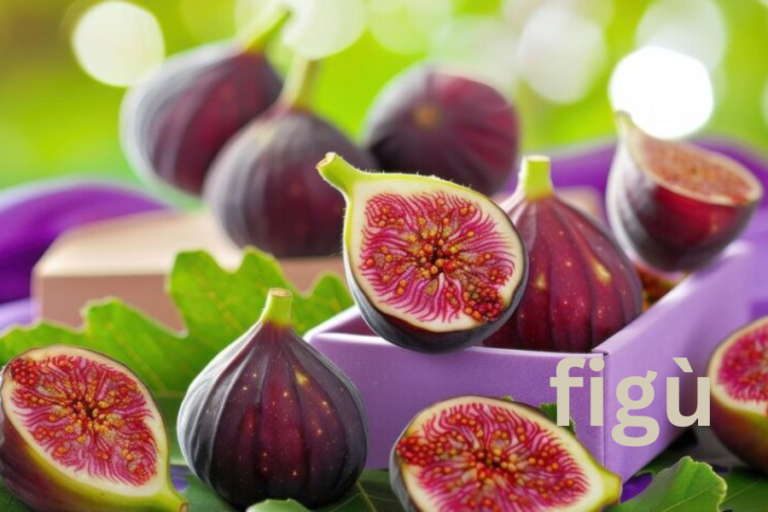Exploring Sauer Condiment: A Flavorful Addition to Your Culinary Repertoire And More Explained
Solving crossword puzzles may be exciting and challenging, particularly when you find Sauer condiment-related clues. Frequently appearing, these unique and acidic components enhance the mystery of your mystery-solving journey. This post will examine the Sauer condiments that are frequently found in crossword puzzles, discuss their history, and provide some useful hints for identifying them.
Comprehending the Sauer Condiment NYT Crossword Answers
For those who are serious in solving the New York Times crossword, grasping the Sauer condiment clues is essential. These condiments, which are essential components that give a range of meals a zest, are distinguished by their acidic, sharp, or sour qualities. Pickles, sauerkraut, mustard, and vinegar are a few examples. These tasty additives have a long history in many different international cuisines, and because of their unique flavors and qualities, they are often seen in crossword puzzles. Gaining insight into the origins and culture of these Sauer sauces can improve your crossword puzzle solution skills and make the experience more pleasurable.
The Importance of Sauerkraut in History and Culture
An International Chef Star
Ancient China is where sauerkraut’s long history began, thousands of years ago. On extended trips, this fermentation technique was crucial for keeping veggies fresh. Later, sauerkraut made its way to America thanks to German immigrants, and it soon became a valued mainstay in many homes.
A Culturally Diverse Item of Interest
While miso is the star of the show in Japan, kimchi is the food of Korea. Foods like sauerkraut are loved all across the world for their distinct tastes and long shelf lives. These dishes transcend ethnic barriers and offer a flavor of the past with each mouthful.
The Function in World Cuisines
Sauerkraut complements cuisine all around the world, from German bratwurst to New York Reuben sandwiches. Its crisp texture and acidic flavor make it an adaptable component that may be used to enhance the flavor of many different recipes.
The Health Advantages of Eating Fermented Foods
Enhancing Digestive Health
Probiotics, or good bacteria, are abundant in aged foods like sauerkraut and help maintain gut health. By promoting a balanced gut flora, these probiotics enhance nutritional absorption and digestion.
Boosting the immune system
An immune system that is robust is correlated with intestinal health. Probiotics found in sauerkraut help strengthen the body’s defenses against common ailments. Frequent consumption can enhance general health and reduce the number of sick days.
A Powerhouse of Nutrition
Although sauerkraut is low in calories, it is high in fiber, iron, and vitamins C and K. With very few additional calories, this nutrient-dense diet offers substantial health benefits. It can improve your general wellbeing when you include it in your diet.
Highlight of the Article from the New York Times
Growing In Popularity
The New York Times recently reported on the resurgence of sauerkraut and noted how popular it is becoming in modern cooking. This commonplace component is drawing interest in both home kitchens and upscale dining establishments.
Contemporary Cooking
Chefs are experimenting with sauerkraut and finding new uses for it in creative recipes. According to an article in the New York Times, chefs are reinventing sauerkraut by using it in everything from fusion cuisine to upscale tacos.
Cultural Significance
The piece also looks at how the appreciation of traditional, useful foods, symbolized by sauerkraut, is a societal shift. It represents a return to our origins, appreciating leisurely meals and handcrafted cooking techniques.
Conversations with Regional Chefs and Fermenters
The Technique of Fermentation
We talked to some local fermenters who were passionate about making sauerkraut. They divulged the nuances of this age-old method, from picking the greatest cabbage to accomplishing the ideal fermentation.
Creative Culinary Practices
Additionally, chefs voiced their opinions, sharing how they use sauerkraut in their dishes. A chef demonstrated how to make sauerkraut-stuffed pierogies, and another showed off how to use it in a reimagined Reuben salad. The options are genuinely limitless.
Workshops for fermentation
Those interested in learning how to produce their own sauerkraut can attend classes hosted by many fermenters. These courses encourage culinary innovation and provide hands-on experience while demystifying the fermentation process.
Some Advice for Preparing Your Own Sauer Sauce at Home
Components and Tools
To make sauerkraut, you just need some basic kitchen tools, fresh cabbage, and salt. It is essential to have a large mixing bowl, a sharp knife, and a jar or other fermentation container. You can add alternative items like caraway seeds for more taste.
Procedure in Detail
To begin, shred the cabbage and toss it in a bowl of salt. By drawing out the natural juices in the cabbage, the salt will produce a brine.
Fermentation:
Tightly pack the cabbage into a receptacle, ensuring it remains immersed in its own juices. After sealing it, let it sit at room temperature for approximately a week.
Taste and Store:
Check the sauerkraut after seven days. Place it in the fridge if you find it to be tasty. Refrigerate after a little longer fermentation if you like a stronger flavor.
Safeguarding Measures
In order to prevent contamination, make sure your equipment is completely clean. Should any mold develop, throw the batch away and begin again. Making safe and tasty sauerkraut requires careful handling and storage.
The Prospects of Fermented Condiments and Sauer Condiments
New Developments
Fermented foods, including sauerkraut, appear to have a bright future. Innovative products that appeal to daring palates, such as flavored sauerkraut and ready-to-eat fermented snacks, are becoming popular.
Ecological Methods
Progress in the fermented food business is being driven by sustainability. More and more consumers are looking for organic produce that is locally obtained for fermenting. Local farmers gain from this movement, which promotes environmentally responsible methods.
Innovation in Cuisine
Food aficionados and chefs are always coming up with innovative methods to use fermented foods in their recipes. Culinary ingenuity abounds in everything from kimchi-topped pizzas to cocktails laced with cabbage.
Solutions to the Sauer Condiment Nyt Problem
Gaining proficiency with the NYT crossword’s Sauer condiment clues will significantly improve your puzzle-solving abilities. Key tactics include identifying patterns and common prefixes, being aware of synonyms and variations, and gauging the complexity of clues. How to use them is as follows:
Identify Patterns and Prefixes: Keep an eye out for commonly used prefixes, such as “tangy,” “sour,” or “sharp.”
Understand Variations and Synonyms: Learn some terminology, such “gherkins” for pickles and “acetic acid” for vinegar.
Recognize the Levels of Clue Difficulty: Simpler puzzles have clear-cut clues, whilst trickier ones could have wordplay or cryptic allusions. Adapt your approach to the puzzle’s level of difficulty.
Useful Condiments for Practice
Let’s examine a couple sample crossword clues to help you strengthen your abilities. For example, the five-letter clue “Hot dog condiment” could mean “mustard,” but the seven-letter clue “Sour liquid used in cooking” could mean “vinegar.”
Try solving this quick practice question:
“Brined cucumber” (7 letters) is the clue. – Pickles, please.
“Fermented cabbage” (10 letters) is the clue. – Response: Sauerkraut
“Yellow condiment” is the clue (7 letters) – Response: Mustard
“Sour liquid” (7 letters) is the clue. Vinegar is the answer.
You may improve your ability to recognize Sauer condiment clues in crossword puzzles by using these practice sheets.
Examples of sauer sauce condiment
All across
I’ll be back shortly,” is slang for texting.
In response, BRB “Sauer” condiment
Clutch with a long, hooked beak, that’s what.
Gonzo Drunken, as a brunch answer
Reaction: inebriated letters next to Chuck Schumer’s name
In response, DNY
Dim
Sulk
In response, brooding
used as a talking point for campaigns
Ranon: similar to trending eateries
Answer: the C.I.A.’s buzzy Cold War equivalent.
In response, KGB Happy Meal
Toy, is the answer.
Summary
This essay delves into the intriguing world of Sauer condiments, emphasizing their use in crossword puzzles, their diverse historical and cultural origins, and their changing position in contemporary cooking. Sauer condiments, which are frequently included in crossword puzzles and are distinguished by their tart and acidic flavors, include pickles, sauerkraut, mustard, vinegar, and other common pickles.
It looks into the origins of sauerkraut, which dates back to ancient China and was introduced to America by German immigrants. The article highlights the global appeal of fermented foods, such sauerkraut, their use in various cuisines, and their health benefits.
According to the New York Times, sauerkraut is making a comeback in contemporary cooking thanks to chefs’ creative and unique uses of it. The article also explains how popular fermentation workshops are becoming and offers recipes for making sauerkraut at home. It also covers the innovative methods that chefs are experimenting with fermented products and the movement toward sustainability in the fermented food sector.
Facts
Sauer Condiments: These include pickles, sauerkraut, mustard, and vinegar, known for their tangy, sharp, or sour flavors.
Historical Significance: Sauerkraut has roots in ancient China and was brought to America by German immigrants.
Cultural Importance: Sauerkraut, along with other fermented foods like kimchi and miso, is cherished worldwide for its unique flavors and long shelf life.
Health Benefits: Fermented foods are rich in probiotics, which support gut health and boost the immune system. Sauerkraut is also low in calories and high in nutrients like vitamins C and K, iron, and fiber.
Modern Trends: Sauerkraut is experiencing a resurgence in modern cooking, with chefs experimenting with it in various innovative dishes. The New York Times has highlighted its growing popularity.
Sustainability: The fermented food industry is focusing on sustainability, with an emphasis on locally sourced, organic produce.
FAQ
1. What are Sauer condiments?
Sauer condiments are tangy, acidic, or sour-tasting ingredients used to enhance the flavor of various dishes. Examples include pickles, sauerkraut, mustard, and vinegar.
2. Why are Sauer condiments important in crossword puzzles?
These condiments frequently appear in crosswords due to their distinctive flavors and historical significance. They are common clues because of their familiar and often well-known nature.
3. What is the historical background of sauerkraut?
Sauerkraut originated in ancient China as a method of preserving vegetables through fermentation. It was brought to America by German immigrants and has since become a staple in many households.
4. How does consuming sauerkraut benefit health?
Sauerkraut is rich in probiotics, which support gut health and boost the immune system. It is also low in calories but high in vitamins C and K, iron, and fiber.
5. What recent trends are seen with sauerkraut?
Sauerkraut is gaining popularity in modern cuisine, with chefs using it in innovative recipes and fusion dishes. There is also a trend towards sustainability, with a focus on locally sourced and organic ingredients.
6. How can I make sauerkraut at home?
To make sauerkraut, shred cabbage, mix it with salt to draw out natural juices, and pack it tightly into a fermentation container. Let it ferment at room temperature for about a week before tasting and refrigerating.
7. What should I do if mold appears on my sauerkraut?
If mold develops, discard the batch and start over. Ensuring that all equipment is clean and handling the sauerkraut carefully are key to preventing contamination.
Explore engaging stories and insights into the lives of inspiring individuals at MediumPeople.com.






